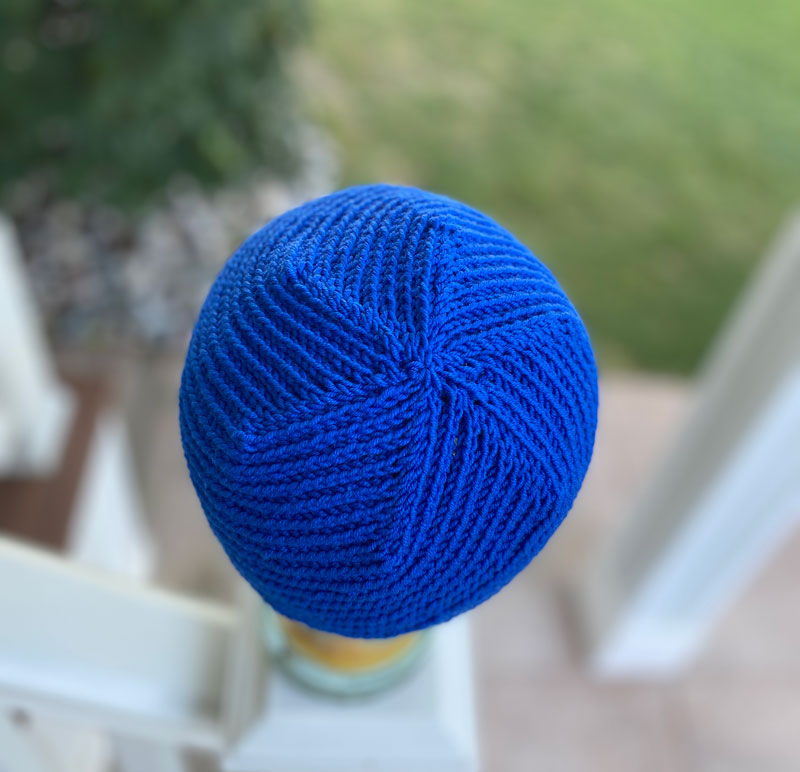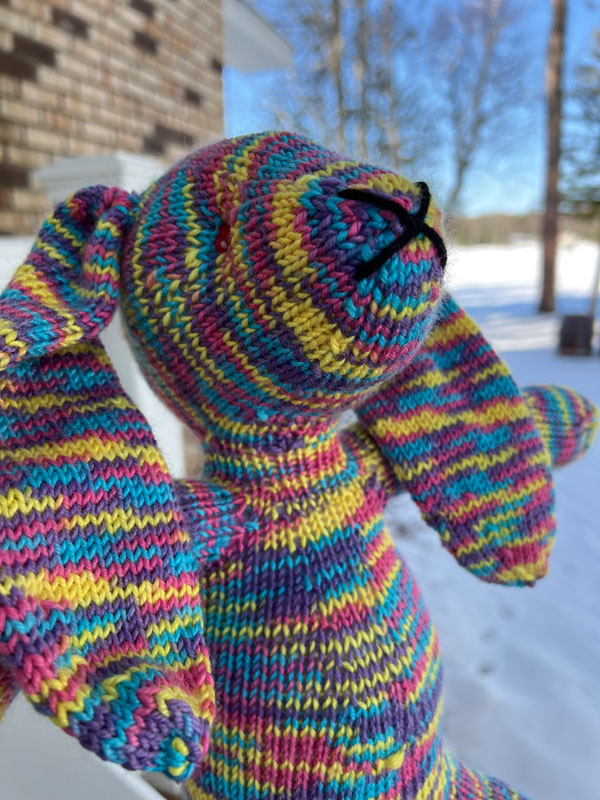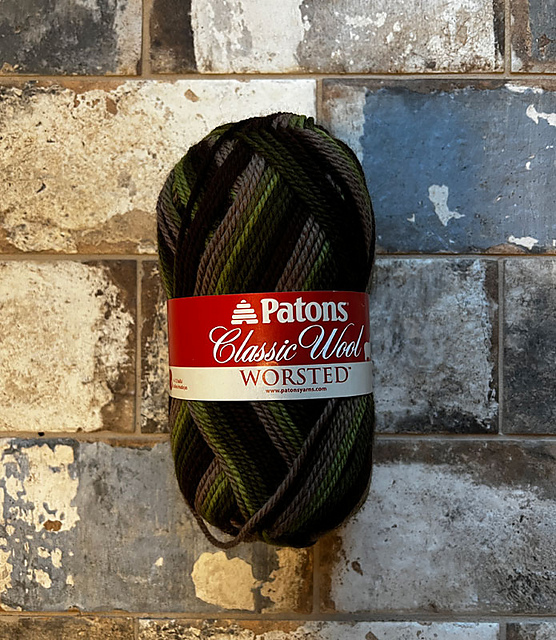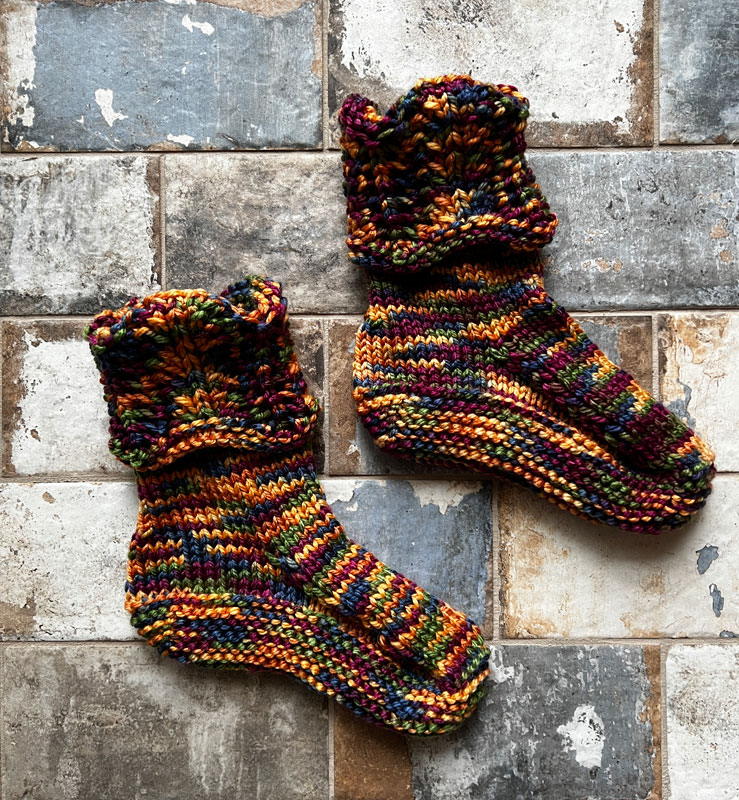
All together now, you non-toy knitters: “Hurrah, I thought she’d never go back to not-toys.” Actually, I’m still knitting toys like crazy but I thought I’d give you some relief from the onslaught of cute.
This is Wooly Wormhead’s Kikanna. Great hat with a bit of a bonus. It’s free on Wormhead’s (or should I say Wooly’s) website. I knit my Kikanna in Schachenmayr Merino Extrafine 120. Ignore that “extrafine” because, though it is of extrafine quality, it’s actually a DK weight.

That wonderful swirly crown is seriously perfect.
Based on notes from others who’ve knit this hat, most prefer greater depth before the crown decreases start. I knit my large size to 6 inches (instead of 5.25 inches) from the cast-on before starting the crown decreases. That worked well.
The “yarn over, knit 2 together” stitch pattern in the body of the hat is devilishly difficult to fix if you make a mistake. It’s super easy to work and very rhythmic. You get to thinking you don’t need to pay attention. Um. Pay attention anyway. That’s my sense of it. The result of a bit of concentration is one beautiful hat.

Next up is Anne Mizoguchi’s Ravelry: Herringbone Hat, in defunct Classic Elite’s Arietta. This DK weight freebie is an easy fun knit with lots of bang for not much effort. Totally easy colorwork with a well-behaved attractive crown.

There’s a minor error in the pattern on the length of the herringbone section supposedly being measured from the cast-on edge. The designer must have meant us to measure that length from the end of the ribbing section. I worked 2 inches of ribbing, followed by 7 herringbone pattern repeats. Following the length directions as written and you end up with a good hat for a big shallow-headed toadstool.

Next: I’ve loved Erica Heusser’s fingering weight Passerine Hat from the moment I spotted it on Ravelry. I was an early purchaser of the pattern. But once I spotted the projects appearing–and there now are more than 1200 project pages–I spotted the challenge of this hat and was discouraged from knitting it. Do you see it immediately?

To me, the birds and the background need to be high-contrast to work well. But those long floats are going to “want” to creep through the fabric and make a mess of it. My Passerine is a nice try but, I think, it’s finally an unsuccessful hat.
Some on Ravelry report success using ladder back jacquard technique to solve the issue created by long floats “caught” on the inside of the hat. Alexis Winslow, among many others, have excellent video tutorials on the technique. Let’s just say that I saw the problem before I began knitting. I watched videos clearly explaining a possible solution. But I was too chicken to try it. Old dog just wasn’t in the mood for learning a new trick. Blocking the hat helped some with hiding the float “catches.” But not much.

Very nice crown though!
The next hat is Thermal Hat. It’s Green Mountain Spinnery’s Kate Salomon’s light fingering weight creation. It’s such a simple creature. And I absolutely love it! I’ve worn the living daylights out of it this winter. What on earth are “living daylights” anyway? “Daylights” are eyes! Wikipedia says the earliest recorded use of the term in a threatening way is in Henry Fielding’s 1752 novel “Amelia.” One character says he’s ready to thrash a woman whose words offended him and says if she says it again he’ll “darken her daylights.”
Back to the hat. I knit mine in Fiber Isle-Buff in their lavender colorway. I purchased the yarn at a deeply discounted price back in 2014. How time passes! I didn’t realize it was light fingering weight and I had some difficulty figuring out what to knit with it. Plus my delay in using it was encouraged by the fact that it was (initially) one of those yarns so expensive you might want a loan to purchase it. My skein said it was “25% minimum bison/cashmere” and “made once a month from fibers left over from our blends. Never the same twice but always nice.” Not sure what “bison/cashmere” is but it’s super-soft. 40 grams of yarn, 175 yards, and I had myself a very special hat.

If you decide to knit this be alert for one bit of pattern-writing that I initially misread. At round 3 of the crown decreases (and round 7 too) the designer uses parentheses and one asterisk to denote what is to be repeated. Round 3 directions start out with a “K4” (and round 7 with a “K3”). You do that once at the start of the round and then repeat only what’s in the parenthesis. With that, the crown decreases work out perfectly, keeping the slipped stitches nicely stacked.

So tidy. So pretty.


























